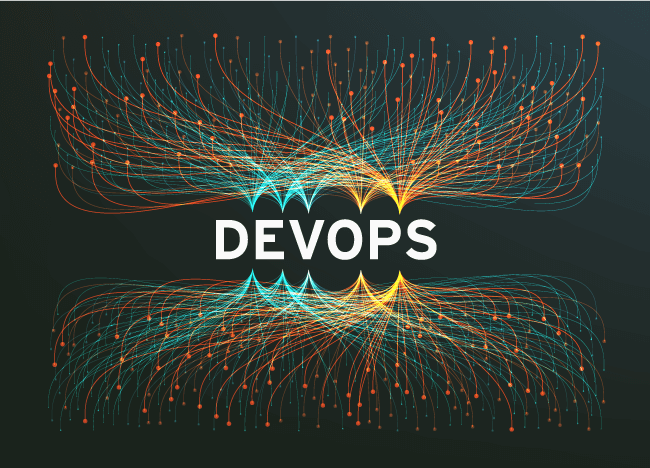CI/CD isn’t just a technical process—it’s a business enabler. Efficient development pipelines allow you to respond quickly to market changes, address customer needs rapidly, and launch new features faster than the competition.
However, adopting the tools that make CI/CD possible isn’t enough. Without a tailored architecture — particularly on a platform like AWS — you risk overspending on your cloud investment and creating insecure development environments.

What does it mean to have a tailored architecture? First and foremost, it means utilizing the right tools and having a strategy for the entire development lifecycle.
In AWS, that means focusing on these four things:
1. Automated testing and integration tools
Like AWS CodeBuild and AWS CodePipeline that allow you to build, test, and deploy code automatically. Integrating these services into your pipeline means that each time a developer makes changes, the code is automatically tested to identify issues before they escalate.
From a business perspective, automated testing reduces the time and resources spent on debugging and manual quality assurance, allowing companies to focus on delivering features that enhance customer experience. It’s essential to ensure that the architecture supports different types of testing—unit, integration, and performance testing—so that quality is built into every stage of the development process.
2. Flexible and scalable infrastructure
Via AWS’ cloud-native environment and services like Amazon Elastic Container Service (ECS) or AWS Lambda allows you to build microservices-based architectures that can grow in tandem with your needs. Additionally, these services enable the independent deployment of different parts of an application, reducing risk and downtime.
3. Version control and source code management
With AWS CodeCommit, a managed source control service that hosts Git repositories. This facilitates collaboration among development teams and provides a historical record of code changes.
4. Infrastructure as Code (IaC)
Using tools like AWS CloudFormation or AWS CDK to ensure consistency and repeatability in infrastructure deployment. By defining infrastructure in code, you can automate the creation of development, testing, and production environments, reducing the chance of human error. This is crucial for maintaining a secure and efficient CI/CD process, as it automatically enforces best practices and compliance standards.
For organizations that want—or need—to stay in VMware, the first option we can help them with is purchasing its usage directly through a cloud provider like Microsoft.
Optimizing your CI/CD pipeline
An optimized CI/CD pipeline reduces costs, accelerates your time-to-market, and efficiently uses your development resources.
In AWS, as in other platforms, you need to put your energy toward these key practices:
Use containerization and serverless technologies
Containers managed through Amazon ECS or Amazon EKS (Elastic Kubernetes Service) encapsulate applications and their dependencies, ensuring that software runs reliably between different environments.
By adopting containerization, you can reduce infrastructure overhead, speed up deployment, and improve resource utilization. Serverless technologies like AWS Lambda further enhance this optimization by allowing you to execute code only when needed, eliminating the costs of running idle servers.
Implement intelligent build triggers
Not every code change needs to trigger a complete rebuild and redeployment of your application. Implementing intelligent build triggers within AWS CodePipeline can save time and resources.
For example, a change in a front-end component doesn’t always necessitate a back-end rebuild. By configuring your pipeline to only build the components that have been altered, you can significantly reduce processing time and costs.
Monitor and analyze performance
Continuous monitoring is crucial to optimize a CI/CD pipeline. AWS provides services like Amazon CloudWatch and AWS CodePipeline’s built-in monitoring tools to track pipeline performance, identify bottlenecks, and ensure that builds and deployments run smoothly.
Keeping your pipelines secure
Security needs to be a top concern, especially when deploying applications in the cloud. To ensure your CI/CD pipelines are secure in AWS, you need to:
Implement strong access controls
AWS Identity and Access Management (IAM) allows you to enforce strict access controls within your CI/CD pipelines. Only authorized personnel should access specific parts of the pipeline, and permissions should be granted based on the principle of least privilege.
For example, developers may be granted access to CodeCommit repositories but not to production deployment stages in CodePipeline. This segregation of duties minimizes risk and prevents unauthorized changes to critical production environments.
Automate security scanning
AWS CodePipeline can be integrated with security tools like Amazon Inspector or third-party solutions to scan code for vulnerabilities before deployment automatically. Automating security checks ensures that issues are identified and addressed early in the development cycle, reducing the risk of deploying insecure applications.
Encrypt data in transit and at rest
AWS provides services like AWS Key Management Service (KMS) for managing encryption keys. All data should be encrypted both in transit (using TLS/SSL) and at rest. This safeguards sensitive information and protects intellectual property, even if an unauthorized party gains access to storage systems.
Audit and logging for compliance
Auditing is crucial, especially for companies operating in regulated industries. AWS CloudTrail provides a detailed log of all user activities within your AWS environment. Integrating these logs into the CI/CD process allows you to monitor changes, track access, and demonstrate compliance with security policies.
While optimizing and securing the CI/CD process on AWS can dramatically improve your software development's speed, reliability, and security, the process of doing so is just that—a process.
Schedule a clarity call with our experts today for help optimizing and securing your pipelines—or assistance with any component of your AWS environments.
Categories
- Cloud Migration and Adoption
- Enterprise IT and Infrastructure
- Artificial Intelligence and Machine Learning
- Data Management and Analytics
- DevOps and Automation
- Cybersecurity and Compliance
- Application Modernization and Optimization
- Featured
- Managed Services & Cloud Cost Optimization
- News
- Workplace Modernization
- Tech We Like
- AWS
- Social Good News
- Cost Optimization
- Hybrid Cloud Strategy
- NVIDIA
- Application Development
- GPU






